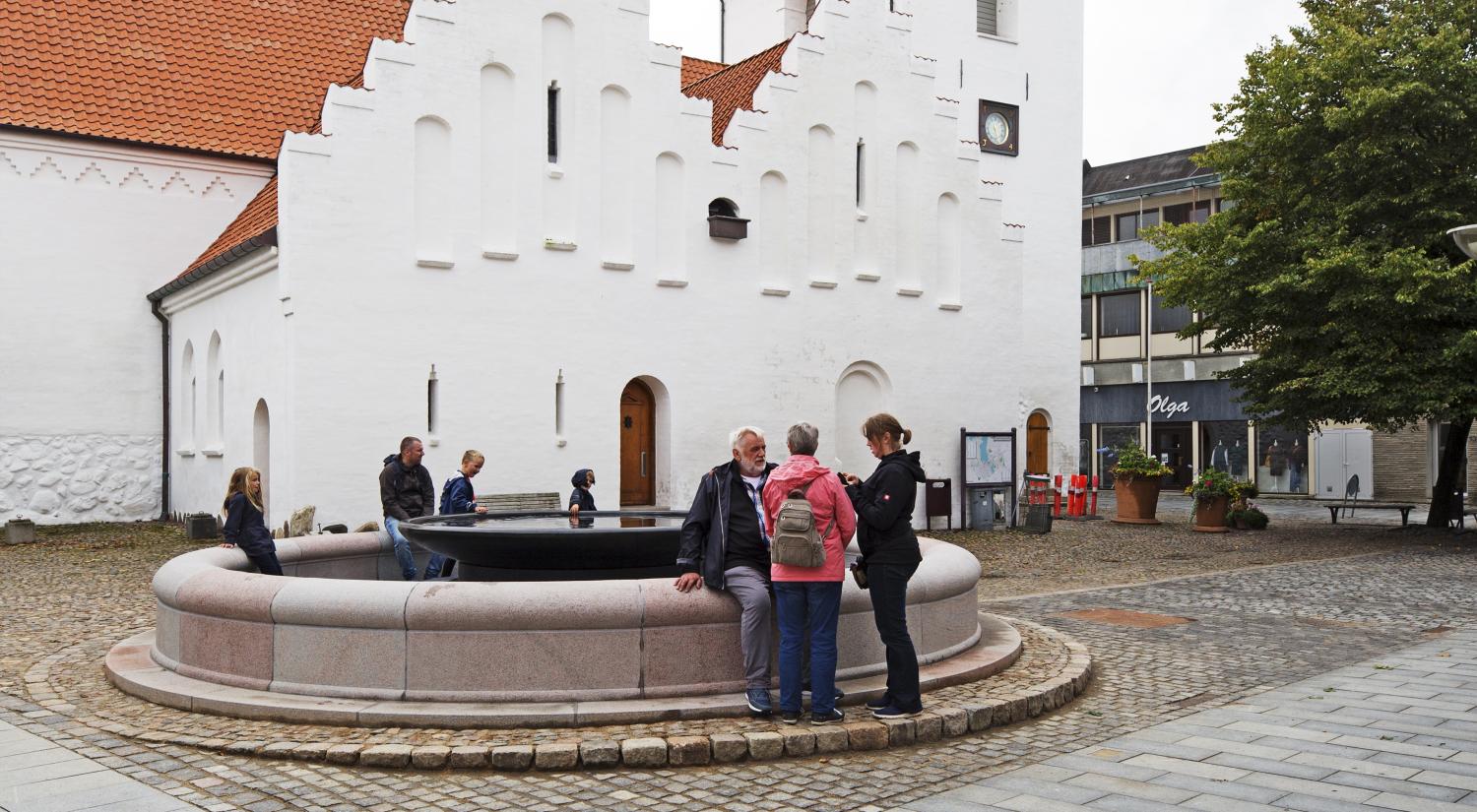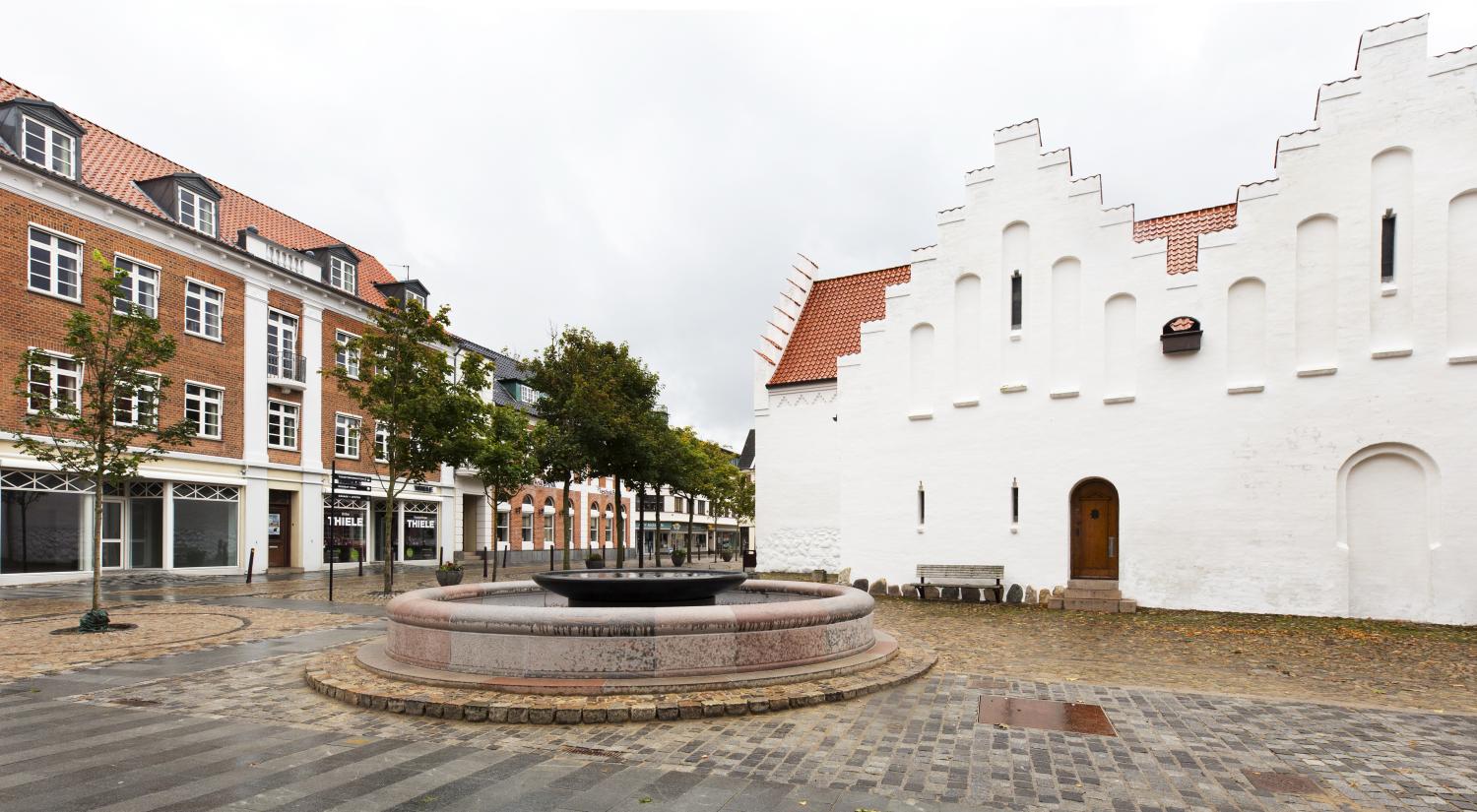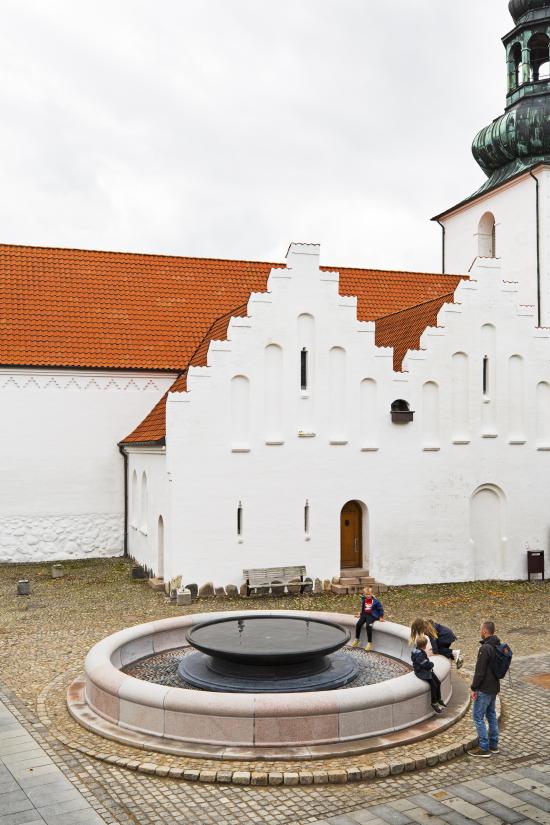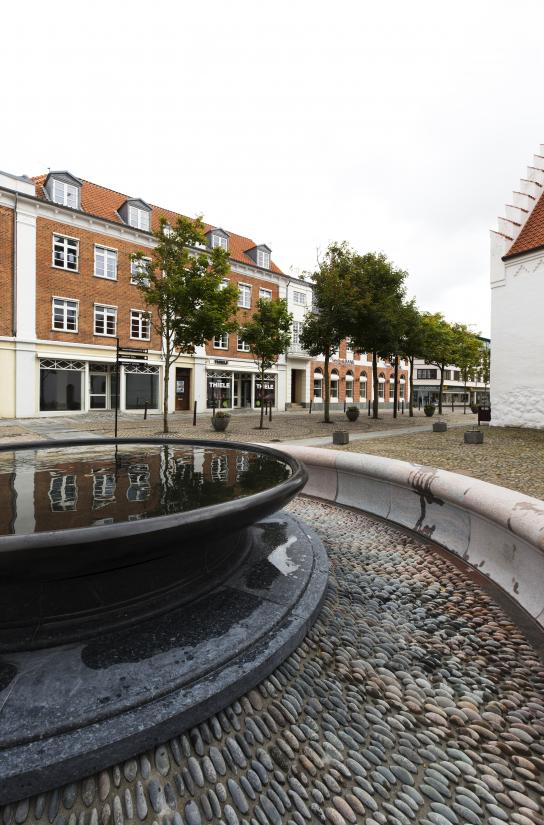Karin Lorentzen dug deep, researched widely and involved the citizens of Lemvig in the creation of her large decorative project for the historical city square in Lemvig. The result is Iris, a new water feature measuring seven metres in diameter with a site-specific character that engages in a dialogue not only with its concrete location but also with local cultural history and the area’s unique geological characteristics.
An outward gaze
Turning one’s gaze towards the universe and bringing knowledge from all over the world to Lemvig – that was the mantra for the poet Thøger Larsen (1875–1928), who was born in Lemvig, and whose curious approach to life and, not least, astronomy and everyday life served as an inspiration to Lorentzen. In both title and design, Iris refers to this curious, outward gaze. Seen from above, the beautiful water feature resembles a large eye, open to the universe.
Granite, bronze, water
With its two pools, Iris extends over the square like ripples in water. The ripples form different levels that act as steps and seating and define a welcoming space. The curved granite border of the large pool doubles as a bench. The bottom of the pool is a mosaic of elliptical beach stones that form an iris around the eye’s pupil. The mosaic encircles the inner, raised pool: a large bronze basin, three metres across, with circulating water. An exquisite reinterpretation of the classic fountain in materials and forms that engage in an interplay with the stone paving on the square and with the onion-shaped copper cupola on Lemvig Church, the fountain’s nearest neighbour:
‘Iris is a traditional water feature. I hope that people will sit down, swing their legs over the edge and sit with their feet on the beautiful stone mosaic. Above all, Iris is a piece of furniture intended to be used,’ says Lorentzen.
An almost archaeological approach
The many pebbles in Iris’s mosaic are an additional aspect of the site-specific character of the installation. The elliptical stones from the North Sea coast were collected from nearby shores and beaches by local citizens who were invited by Lorentzen and Geopark West Jutland to contribute to the physical realization of the new water feature. The stones thus represent a collectively gathered statement from the Ice Age about the geology of western Jutland. They also contain an interesting reference to local cultural history, as similar paving is found in many local farmyards.
‘Karin Lorentzen took an almost archaeological approach. She dug deep in Lemvig and combined local characteristics – from geology, history and literature – into a beautiful work of art that also revitalizes Lemvig’s city square and makes it more inviting,’ says Christine Buhl Andersen, chairwoman of the New Carlsberg Foundation.
About Karin Lorentzen
Karin Lorentzen (b. 1968) graduated from the Royal Danish Academy of Fine Arts in Copenhagen in 2002. Rather than the traditional representation of the human body, her sculptural practice mainly revolves around open structures that appear as places that the body can enter into and explore. Lorentzen has exhibited in many art museum and art halls around Denmark. The water feature on the square in Lemvig is the latest in a series of significant decorative projects and landscape features by Lorentzen, including projects at Hvidovre Beach, the Greenhouses in the Botanical Garden Aarhus and Retten på Frederiksberg (Frederiksberg Courthouse).








